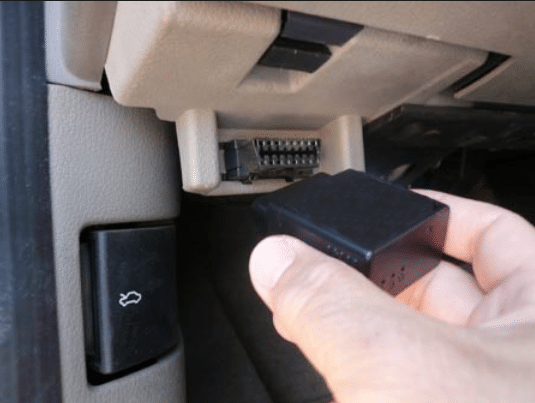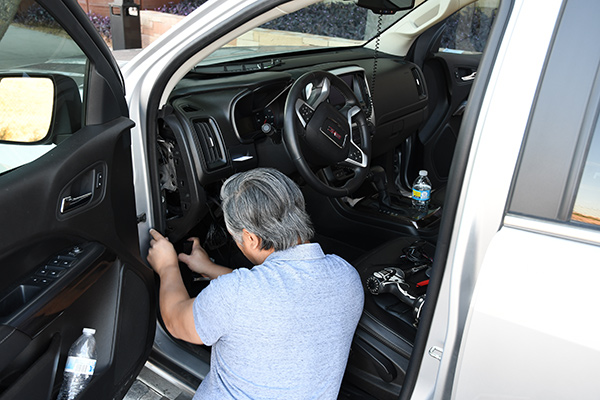Vehicle Tracking Devices: Which Type is the Best?
Today, there are more options for vehicle tracking devices than ever before, especially for commercial and government fleets.
For years, there were two main choices: devices that were wired into the vehicle with a three-wire connection and plug-and-play (PNP) devices that connect directly to the diagnostic port. Now, smartphone-based tracking apps are also a viable alternative.
So which is best?
In the vast majority of situations, PNP devices are the best option for the reasons we’ll discuss soon. Under the right set of circumstances, though, you may need hardwired devices. Smartphone app-based tracking is also viable in certain situations.

Plug-and-Play Fits Many Needs
Right now, PNP devices are the go-to for most vehicles made after 2008. An easy-to-install PNP device will get you up and running with GPS tracking without any time lost to complex wiring. There’s no need to pull the vehicle off the road to expose or access the vehicle’s wiring.
In most cases, PNP devices can automatically pull diagnostic information from the engine. They’re also smart enough to interpret and report information through the vehicle’s motion.
They even allow some limited in-cab driver coaching. While it can’t measure up to the in-cab coaching capabilities of a smart camera, some PNP devices come equipped with a built-in buzzer that when triggered, releases an audible sound to the driver. The buzzer can coach in the moment and inform the driver to correct driving behavior such as speeding, harsh braking, or rapid acceleration.
PNPs have another great advantage over other vehicle tracking devices: Employees who use their personal vehicles for work can easily install them at the beginning of their workday, then remove when it’s time to go home.
Of course, some features of PNP devices might not work for your situation.
Most OBD-II ports in light-duty vehicles are exposed, so the driver has easy access to them. The intent does not even have to be malicious for the device to be removed. An accidental hit from a leg getting in or out of the cab can cause the device to be jarred loose from its position in the OBD-II port.
An additional pass-thru cable can be used to install under the dash and keep the diagnostic port free, which can sometimes add complexity to the installation.

Hardwired Devices Still Have Their Place
While most GPS providers use PNP devices for GPS tracking and diagnostic information in the vast majority of vehicles, certain situations call for hardwired vehicle tracking devices.
Vehicles that don’t have an OBDII port will require a hardwired device, as well vehicles that have been modified or customized to the point where they can’t supply reliable diagnostic and ignition data. These situations are rare.
Also, vehicles that use add-ons such as lifts or booms will need hardwire-capable devices to monitor those inputs – however, a diagnostic plug-and-play device can still handle the tracking, ignition, and diagnostic data.
If you need to monitor temperature sensors or use tethered driver ID fobs, you’ll also need to rely on the hardwired option.
When to Use Smartphone App-Based Vehicle Tracking
You can do a lot with a smartphone – including tracking your fleet vehicles. There are some significant advantages to going the smartphone app route.
If you’re on a tight budget, you can save plenty of money by using smartphone apps for GPS tracking instead of vehicle tracking devices. There’s no cost for the device since your employees can use their own phone – and you won’t have to pay the upfront cost for a PNP device. Typically, the monthly service fee for this option is also less expensive.
They’re also simple to use and allow you to get started quickly. Just download the app and start tracking. The smartphone apps don’t provide an overwhelming amount of data, which can flatten the learning curve if you’re new to GPS tracking and fleet management. This also makes apps a great option for testing a provider.
GPS Insight offers smartphone-based GPS tracking on a month-to-month basis without a contract, which helps organizations that are concerned about long-term commitments. This also makes it easier to scale up to a more-sophisticated solution when you’re ready.
This flexibility comes with a few caveats.
First, you’re tracking the device rather than the vehicle. That can cause issues if your employee loses their phone, lets it run out of power, or deliberately turns it off.
Also, smartphone apps can’t pull information straight from the vehicle. If you need deeper insights into your vehicle’s use beyond speed and location, the smartphone app isn’t the solution for you.
That means app-based solutions won’t provide insights into safety so you can’t coach employees on their driving habits. Hard-wired and PNP devices both detect inertial information that can point out harsh driving habits. Without that information, you lose facts to coach drivers.
Finally, the smartphone’s battery will likely drain more quickly when running GPS for hours at a time.
Vehicle Tracking Devices – Final Thoughts
In most cases, a PNP device will be exactly what you need for vehicle tracking and diagnostic data. If your vehicle doesn’t have an OBDII port or you have more complex needs such as input monitoring, you’ll need a hardwired device.
If you’re on a tight budget or only want minimal data, the smartphone app can be an effective first step into GPS tracking and fleet management.





